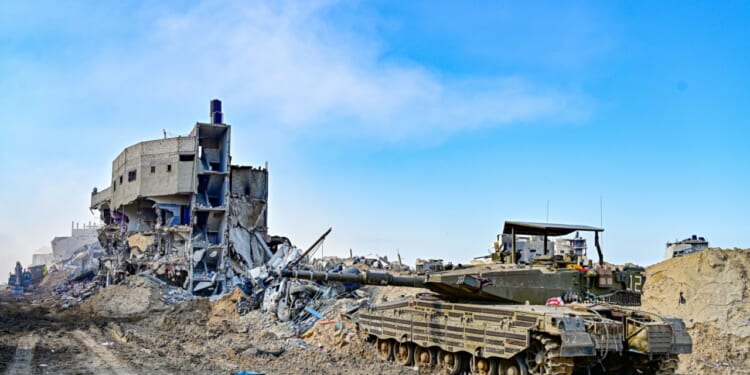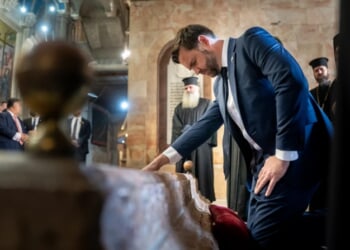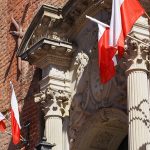Reconstruction funding for a devastated region must be paired with fundamental governance reform.
The world has long marveled at the Brady bonds’ ability to turn near-certain defaults into structured, tradable instruments that revived South American sovereign credit markets. The Middle Eastern region, in the wake of protracted conflict, collapsing economies, and humanitarian crises in Gaza, Syria, Lebanon, Yemen, Iraq, and Sudan, is a pressing political and economic challenge. The question is: can a modern, humanitarian version of Brady-style sovereign debt instruments serve to aid reconstruction, attract investment, and restore fiscal sovereignty while promoting regional stability?
The short answer is yes, but only if designed with robust governance, transparent frameworks, and genuine commitments to reform. However, at the same time, one must acknowledge their limitations when devising a new mechanism in today’s realities. The model could support reconstruction in these conflict-affected countries, with a clear emphasis on transparency, humanitarian protection, and long-term financial development.
In the late 1980s, the Brady bonds emerged after the US Treasury, the International Monetary Fund (IMF), and private creditors brokered a framework to resolve a wave of emerging-market defaults through debt exchange. Holders of defaulted or high-risk bank and sovereign debts received in exchange for new instruments backed by the US Treasury through zero-coupon bonds (collateralized debt obligation-style trust structures) to restore creditworthiness and reassure investors.
Back then, the Brady framework helped restore access to international capital markets for many debt-stricken countries and unlocked financing for essential reforms and reconstruction following the crises. The model’s core strengths were risk-sharing, creditor coordination, and credible governance conditions backed by international institutions.
Such a mechanism could prevent creditors’ holdouts from blocking restructurings, but could also be paired with IMF-backed programs, such as structural reforms and fiscal consolidation, to restore resilient sustainability.
However, the Brady approach faced criticisms when some instruments shielded poor prioritization and sacrificed broader equity in the distribution of burdens and benefits.
Why might a Brady-inspired approach help reconstruct the devastated parts of the Middle East? These countries face overlapping needs, including humanitarian relief, reconstruction of essential infrastructure (such as water, energy, and housing), economic diversification, governance reform, and revenue generation. A well-designed, modern Brady-inspired framework could provide access to affordable, longer-term funding for reconstruction and development.
It would also serve as a credible path to debt relief or restructuring, which can be achieved only in the long term, along with governance reforms, anti-corruption measures, and humanitarian safeguards. It would also send a credible signal to private investors that investment risks are being managed, and that returns will be channeled to reconstruction and development priorities.
Yet such a model must adapt to contemporary realities, including the fact that humanitarian protections should be non-negotiable. Scarce resources cannot be siphoned away from essential aid. Therefore, local governance, legitimacy, and inclusivity should be central, not an afterthought. Additionally, financing must be anchored in transparent, independent oversight and robust anti-corruption clauses.
Regional leadership with the international community commitment must be clearly defined to avoid perpetuating dependency, by adhering to core design principles such as humanitarian-first tranching and the use of proceeds. Proceeds should be ring-fenced for essential reconstruction, humanitarian relief, and sustainable development projects.
A transparent, high-priority tracking system would ensure that funds reach intended projects and affected populations. Sovereign debt restructuring with clear cascades, such as collective action clauses to prevent holdouts, reduces the risk of paralysis in times of crisis. A predetermined rules-based path to debt relief if macro indicators fall below agreed thresholds (eg, GDP contraction, inflation, or fiscal gaps), with safeguards to avoid moral hazard.
A “regionally-led, internationally-supported local legitimacy” approach should be the new motto to make an IMF-supported stabilization program feasible when paired with governance reforms, anti-corruption commitments, and civil-society participation. In addition, regional stakeholders should monitor implementation to avoid over-concentration of influence and provide independent, transparent governance, as well as oversight, through the establishment of a Regional Reconstruction Trust (RRT).
Such a multi-donor trust fund, co-managed by the IMF, regional development banks (like the Arab Development Bank and the Asian Development Bank equivalents in the region), and international partners, would issue Brady-style sovereign bonds denominated in a stable currency (the US dollar or a composite currency basket) to raise capital for reconstruction. They would channel the proceeds to services such as water and sanitation, electricity, transportation infrastructure, healthcare facilities, workforce training, education, housing, and digital connectivity. The debt exchange and restructuring mechanism would only target countries facing unsustainable debt loads where an RRT framework, supported by collateral-like instruments, provides the necessary guarantees of specific revenue streams or fiscal compliance assurances.
The engagement of the private sector is pivotal, but it will only work if risk-sharing is addressed through blended concessional funding and impact investments of private capital. That credit enhancements or guarantees backed by international institutions are used to attract private investment into the reconstruction projects. Sovereign risk and credibility would represent the biggest hurdle here, but the solution lies in credible multi-lateral backing, transparent governance, and deliverables.
The fragility of regional security represents another dimension of complication in project implementation. To mitigate that risk, a phased deployment, robust risk assessment, and strong coordination with humanitarian corridors and ceasefire arrangements are needed.
Furthermore, domestic political consideration must be balanced with regional & international oversight. International actors should not legitimize governance deficits; instead, they should incentivize reform and accountability. And to avoid donor fragmentation, a central coordinating body (the RRT) can reduce duplication and ensure alignment of objectives across donors, international agencies, and regional partners, with the caveat of ensuring humanitarian primacy. And where no portion of proceeds is diverted to military or security expenditures that are not approved by core humanitarian governance.
Also, by excluding financing channels that could exacerbate conflict dynamics or sovereignty disputes, and maintaining strict transparency for all disbursements and project outcomes.
Convening a regionally-led and internationally supported working group (regional development banks, donor governments, and representatives from Gaza, Syria, Yemen, Iraq, Lebanon, and Sudan) is only the first step in developing a detailed governance charter, risk framework, and project pipelines with input from humanitarian organizations and indigenous civil society.
Trust-building should be based on scaling up models and prioritized by local stakeholders to enable a transition to sustainable development. This should involve a gradual mainstreaming of reconstruction financing into long-term development capital, with an exit strategy that ensures local ownership and resilience.
Success is not guaranteed because it requires unwavering political will, genuine engagement with local communities, and a commitment to prioritizing civilian welfare over geopolitical convenience. The Brady bond’s legacy offers a blueprint—an invitation to think creatively about debt and development in a way that centres people, transparency, and sustainable reconstruction.
For policymakers, donors, or humanitarians, the question isn’t whether we can reinvent Brady bonds for today’s crises; it’s whether we are willing to redesign and implement a framework that truly serves those who need it most. The time to act is now with both prudence and ambition.
About the Author: Abdulla Al Junaid
Abdulla Al Junaid is a geopolitical columnist and commentator in Middle Eastern and international media. He is the former Department Head for Analysis and Policies at the National Unity Party in Bahrain, the former Deputy Director of MENA2050, an Advisory Board Member of the German-Arab Friendship Association (DAFG), and a permanent committee member of the Germany-GCC Annual Conference on Security and Cooperation. He was a guest speaker at the German-GCC Annual Conference on Security & Cooperation, the Herzliya Conference, and the Abu Dhabi Strategic Forum. He is also an Executive Partner at INTERMID Consultancy (Bahrain).
Image: Ran Zisovitch / Shutterstock.com.


















